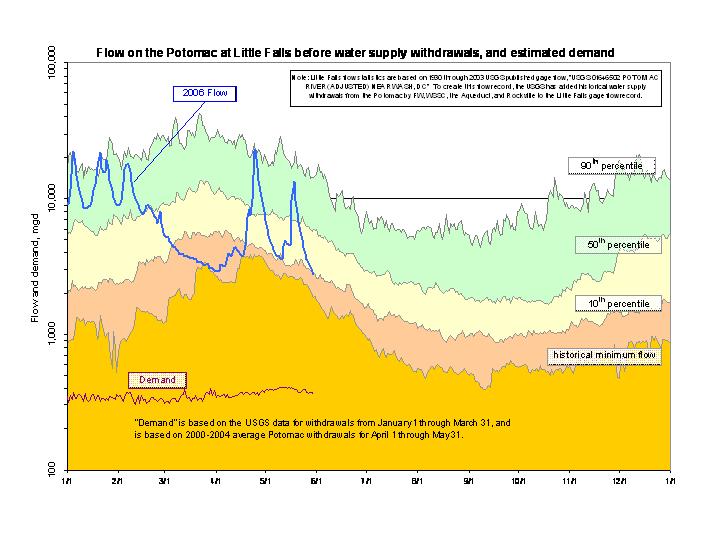When our neighboring suburbs invoke water saving measures to conserve their supplies, the question naturally arises, what about the District? Do we have to cease washing cars and watering lawns?
In fact, the District's water supply comes from the Potomac River, via intakes located upriver. As long as there's adequate water in the river, the District has sufficient water. There are no water intakes below Washington, because the Potomac water becomes salty as it approaches, and mixes with, the Chesapeake. Salt water cannot economically be made potable.
For more such data:
Interstate Commission on the Potomac River basin

How much does the Washington Metro area use? About 0.4 to 0.5 billion gallons per day. Add to that the minimum acceptable flow in the Potomac of 0.1 billion gallons per day, and it's evident that there's a considerable margin between the lowest water flow ever observed, and the amount of water taken by the Washington area.
There are reservoirs upriver, holding about 30 billion gallons of water, which may be drawn upon to maintain adequate Potomac River flow.
What happens to water that we save by means of water conservation measures? Usually, any such unused water just stays in the river and flows on by. That's good for the river, to be sure, but this doesn't help any of our neighboring communities with their water shortages.
A substantial portion of the water we take from the river finds its way back to the river. The water used in your home goes back through the sewer system, to the Blue Plains Sewage Plant, and then back into the river, at least as clean as it was when it was taken from the river. Water used in your garden doesn't take that path, of course, but is lost to plant growth and evaporation.